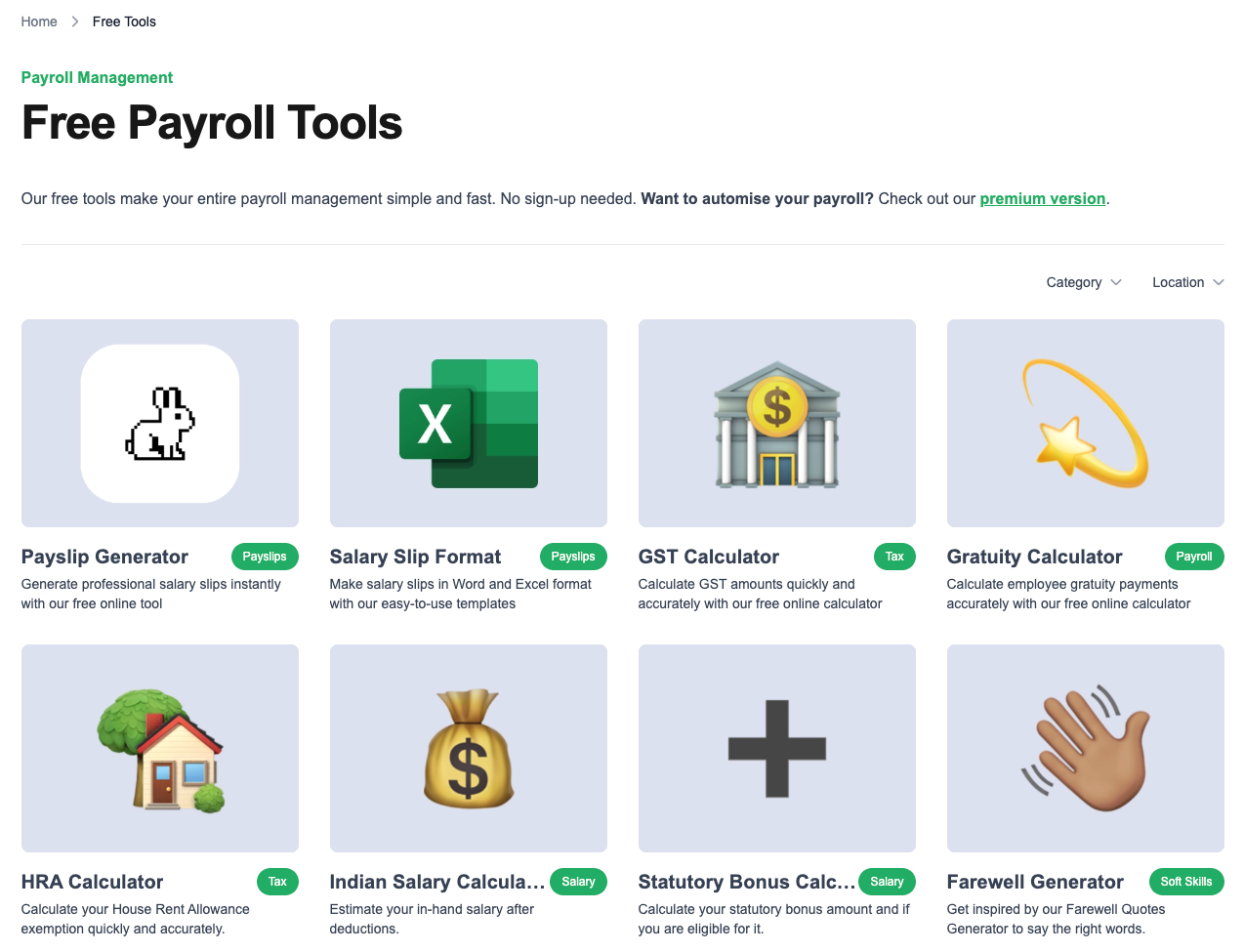Guide for Creating SEO-Optimised Free Tools
Since mid-May, I've created 20 free tools for PayrollRabbit, the payroll management software we're building. In the first three weeks after launching, they've generated over 5,000 impressions and 200 clicks from 0. At first, I wasn't sure what kinds of free tools to make or how to approach building them, but over time, it became systematic. In this guide, I will walk you through the process of creating SEO-optimised free tools.

Why free tools?
Free tools are a powerful marketing strategy. If you create a free tool that is genuinely useful and helps a lot of people, Google likes it, too. Google rewards sites that provide genuine value to users. That means a higher position in Google search results, more impressions, and better click-through rates. (If you're not familiar with these concepts, I wrote a blog post about SEO.) Generating traffic is crucial for any business, but traffic alone isn't enough. Beyond that, Frederic and I believe that trust is the most important thing in business, and offering high-quality free tools helps establish trust with both your audience and Google. Remember, building trust takes time—just like any relationship—so be patient and plan accordingly.
Step 1: Research on what people are looking for
Before I started coding, I took a bit (no, actually a lot!) of time to research what people were looking for. While you can create any tool you want, they take a lot of time and energy to build—so it's worth ensuring people need what you're making. For research, Frederic and I used SEO tools such as Ahrefs and Mangools to analyse search trends. There are two approaches:
- If you have an idea: Search for your specific keyword
- If you need ideas: Start with broad terms like "generator" or "calculator"
Then, look for keywords with high search volume (SV) and low keyword difficulty (KD), as this indicates high demand but low supply. Take note of related keywords. Also, study existing tools carefully and think about how you can make yours 10 times better.
Step 2: Do further research and understand the subject
No coding and more research? It is my biggest lesson after creating 20 free tools: thorough research and preparation are critical. You need to understand:
- What inputs will users provide?
- What outputs do they expect?
- What logic or formulas power the calculations?
For example, the free tools I created were mainly payroll and HR calculators. I had to learn the details behind each calculation, including tax rates, deduction formulas, and compliance rules. This research phase took the most time in the entire process, but investing time here ensures the building phase goes smoothly.
Step 3: Create a free tool
With the research complete, start developing your tool. As you build, revisit competitor tools to see what additional features or content they offer—such as introductions, tooltips, step-by-step guides, or FAQs. These elements improve user experience and engagement. When writing content for your tool, naturally incorporate the related keywords from step 1—this helps people find your tool when searching for those terms. Think about how you can make the tool 10 times better than your competitors. For example, I added detailed calculation formulas as educational content. This transparency helps users understand exactly how the tool works and verify the calculations themselves, while competitors only show the final output.

Creating these 20 tools was incredibly rewarding—not only did they drive traffic to PayrollRabbit, but they also deepened my understanding of our users' needs and the subject itself. I hope this guide helps you create free tools that genuinely serve your audience while growing your business. Please let me know if you make one—I'd love to see what you create!